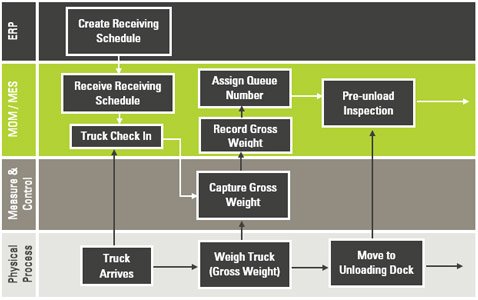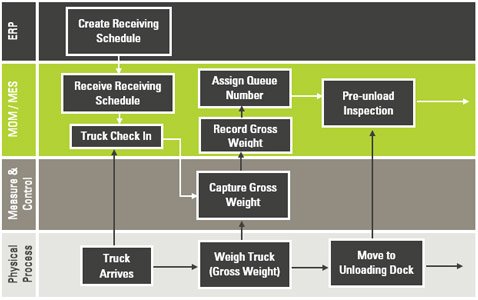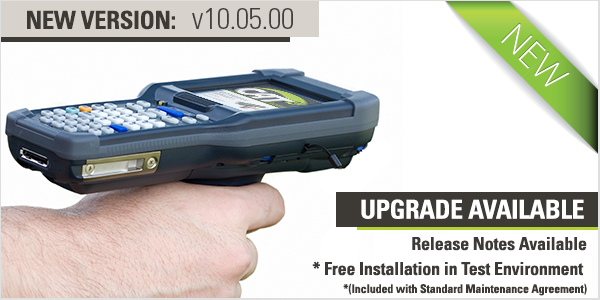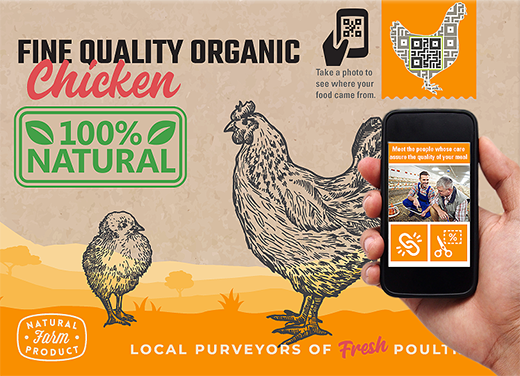On September 24, Walmart released a letter to their leafy greens suppliers requiring end-to-end traceability back to farm by September 30, 2019. This mandate is in response to multiple high-profile recalls and outbreaks associated with these types of products. To help their suppliers meet Walmart’s traceability goal, the letter refers suppliers to the IBM Food Trust network, a blockchain solution pioneered through a partnership between Walmart and IBM to improve food safety.
What is blockchain?
Blockchain is a shared ledger stored across multiple locations. Because it’s shared, data is transparent to participants within the blockchain. Because the ledger is a type of database that only allows entries to be appended rather than changed or deleted, the data in the ledger is immutable or unchangeable. Finally, because it’s stored in multiple locations, no one participant in the business network can modify the ledger without everyone knowing, creating trust in the provenance of the ledger. This new level of data transparency will allow retailers like Walmart to trace products back to their source in seconds, not days.
What is the business case for blockchain?
Obviously, Walmart sees value in blockchain for food traceability through the ability to limit the scope and scale of recalls. In the case of this year’s outbreak of E. coli O157:H7 linked to romaine lettuce, retailers knew that the source of the outbreak was lettuce from the Yuma growing region, but they had no way of easily identifying which of their lots were sourced from that region. As a result, the only solution was to pull lettuce from stores all around the country. If all participants in the value chain are sending data up to a blockchain, a product can be located anywhere along the supply chain instantly. However, there are many other benefits blockchain adoption provides.
The true business value in blockchain is realized through the removal of friction in transaction processes, increased efficiency in transactions, and quick dispute resolution. Using smart contracts, SLAs of a business agreement are turned into code that automates payment and resolves simple disputes. By streamlining transaction processes, food suppliers will reduce loss due to spoilage as perishable items are shipped and received along the supply chain.
Additional value can be found as all plants across an enterprise begin sending data up to a blockchain. Managers can do performance comparisons by plant or by product, identifying problems and developing incentives. Data analysis could reveal that there is consistently a problem at Plant A on Tuesdays or that there are always long dwell times at Plant B for Product X.
Will there be regulatory pressure to use blockchain?
Currently, the main source of pressure in the industry to adopt blockchain is coming from large retail customers and the perceived consumer demand to know where our food comes from. However, developers of food traceability blockchains are giving free access to regulators, creating a negative incentive for companies to participate. Another notable development is the move of Walmart Vice President of Food Safety & Health Frank Yiannas to become the FDA’s deputy commissioner for food policy. One of his first priorities will be proposing regulations advancing the Food Safety Modernization Act (FSMA). Though Yiannas is a strong proponent of blockchain adoption for food traceability, it’s doubtful any new regulation will specifically require blockchain adoption. Companies could select any technology that accomplishes the goals set forth in the final regulation, but blockchain is an obvious option.
Which blockchain solution should I use?
Currently, there are several blockchain projects and commercial solutions in different stages of development, and ultimately, the decision of which blockchain solution you should adopt won’t be an "either/or" decision but "both/and" depending on your goal and the types of customers you serve.
The largest food blockchain solutions currently available are IBM’s Food Trust and Ripe.io's Agricultural blockchain. Food Trust runs on Hyperledger and focuses on the needs of grocery retailers and distributors. Ripe.io also runs on Hyperledger and focuses on freshness in distribution. Additionally, IBM is developing multiple blockchains for different purposes. The first food-traceability blockchain application IBM designed is for food recall. The next application they are building is for freshness tracking. In parallel, a financial dispute resolution (Pay2Procure) application has also been developed by IBM for addressing financial settlements between suppliers and manufacturers and retailers.
Why is it important for my ERP and MES to be blockchain-enabled?
Blockchain projects require clean, accurate, trusted data. Much of this data will be housed in a company’s ERP (Enterprise Resource Planning) system and/or its MES (Manufacturing Execution System). Your provider will need to understand the APIs (Application Program Interfaces) necessary to send data up to a blockchain.
As an MES provider, CAT Squared often integrates our system with ERPs like SAP. SAP is developing a fee-based service for business automation to send up data to Food Trust and FoodLogiQ blockchains for ASNs (Advance Shipping Notices) and EPCIS events (Electronic Product Code Information Services, a global GS1 Standard for creating and sharing visibility event data). This is the kind of data necessary for traceability and food recall; however, much of the data required for freshness tracking will not be housed in the ERP system but in the MES instead.
It’s commonly known in the industry that even the most expensive ERP installation often fails to integrate into the hardware on the plant floor. That’s where MES systems become necessary. The image below is a simplified process map illustrating a receiving process. As you can see, much of the data collected and measured in this process stays in the MES layer and is not sent up to the ERP layer. Consequently, it will be necessary for both the ERP and MES systems to be blockchain-enabled so that all required data can be communicated to the blockchain.

How can my company connect to a blockchain platform?
CAT Squared is the first MES provider in the food industry to become an onboarding partner for IBM Food Trust. We can help food processors contribute traceability data to Food Trust via API integration. Email us at TellMeMore@catsquared.com to learn more.





